The New York City Housing Development Corporation (NYCHDC) will soon relocate to the Equitable Building, a historic office tower at 120 Broadway in Manhattan’s Financial District. As the agency’s new headquarters, the two-floor suite totals more than 109,000 square feet on the building’s second and third floors.
NYHDC’s current offices are located at 110 William Street. For the lease transaction, the agency was represented by Newmark. Silverstein, current owner of the building, was represented by separate Newmark associates alongside an in-house team for the transaction.
“We are thrilled to be moving to the historical Equitable Building in Lower Manhattan, a neighborhood HDC has called home for more than 50 years,” said HDC president Eric Enderlin. “HDC is dedicated to ensuring the success of New York City’s communities and we are proud that our new office space will allow us to be a continued part of the revitalization of one of the city’s most vibrant business districts.”
120 Broadway comprises 1.9 million square feet and debuted in 1915 as the largest office tower in the world. In 2019, Silverstein completed a $50 million modernization project, which included the creation of tenant amenity spaces, refurbished elevator cabs, and a fully renovated lobby with much of the historic ornamentation carefully preserved.
Beyer Blinder Belle oversaw design and completion of the entire renovation project.
Most of the amenity spaces are housed in The Bankers Club, 20,000-square-foot space on the 40th floor. The club includes an 8,000-square-foot indoor lounge, a cafe, a food hall, and an outdoor roof deck for tenants. Additional amenities on the tenth floor include a fitness room, a speakeasy, meeting spaces, and breakout rooms.
Tenants also have access to on-site bike storage.
“NYCHDC’s continued commitment to Lower Manhattan is testament to the long-term strength and appeal of the area’s office market,” said Keith Cody, senior vice president of leasing at Silverstein Properties. “We are pleased to offer them our robust, hospitality-focused amenity program, which includes one of the largest outdoor spaces in an office building downtown.”
This announcement arrives after Silverstein closed on eight new lease signings totaling more than 145,000 square feet. With this latest transaction, the company has completed more than 250,000 square feet of leases at 120 Broadway in the past year.
Subscribe to YIMBY’s daily e-mail
Follow YIMBYgram for real-time photo updates
Like YIMBY on Facebook
Follow YIMBY’s Twitter for the latest in YIMBYnews

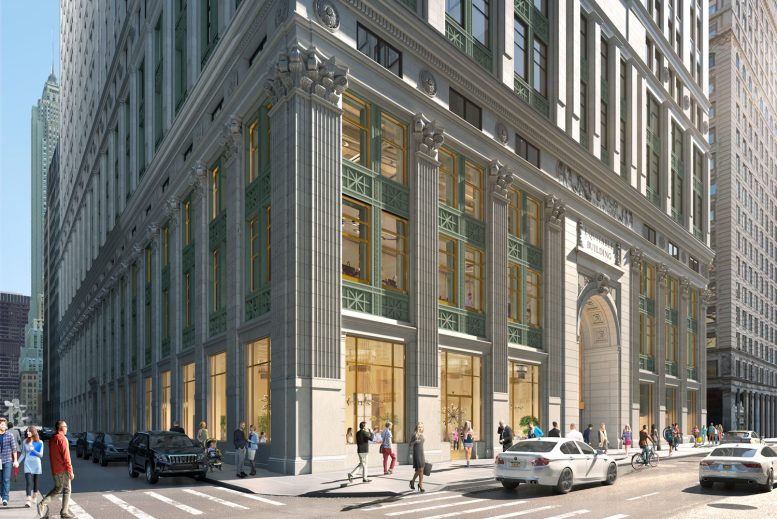
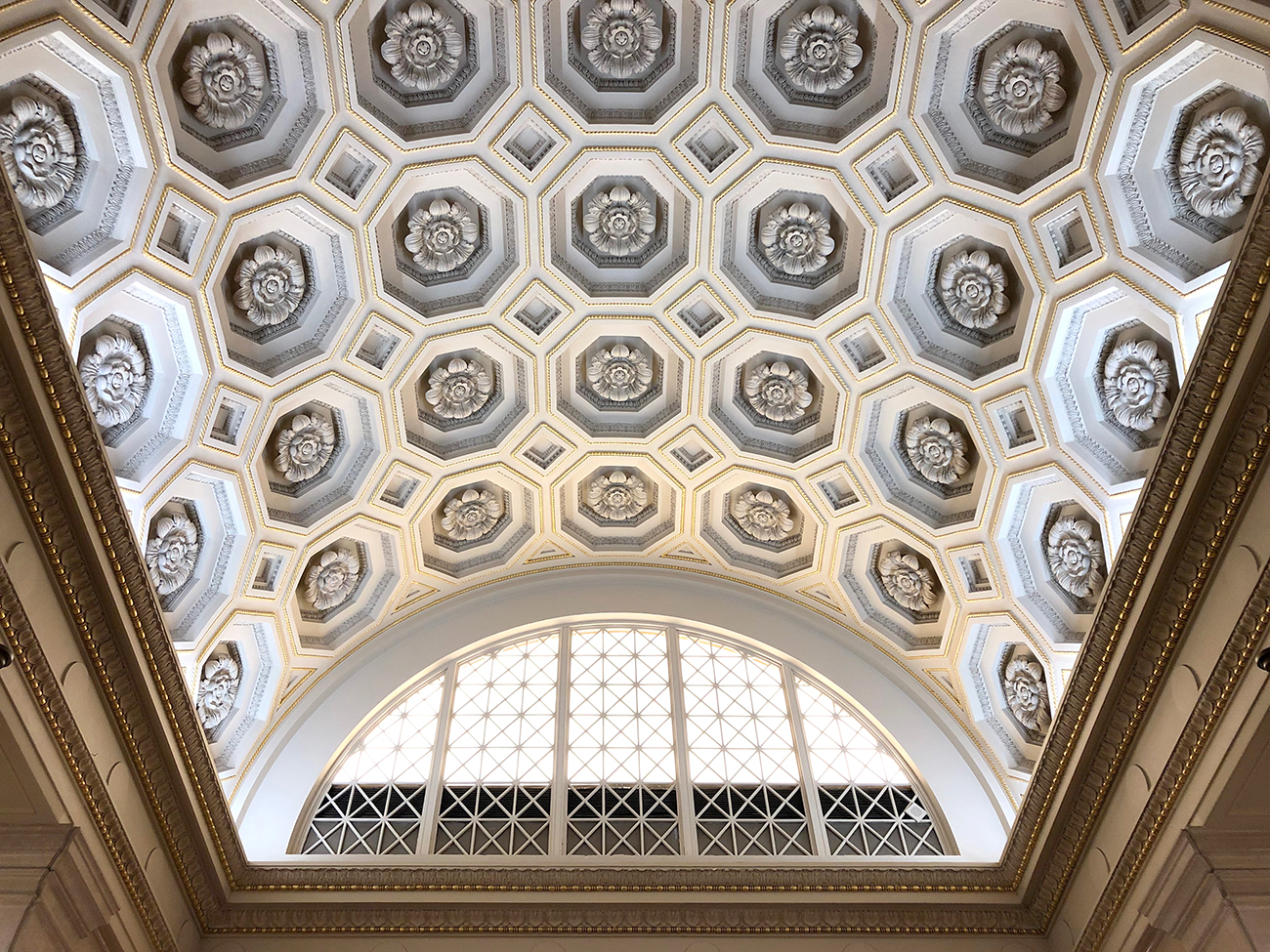
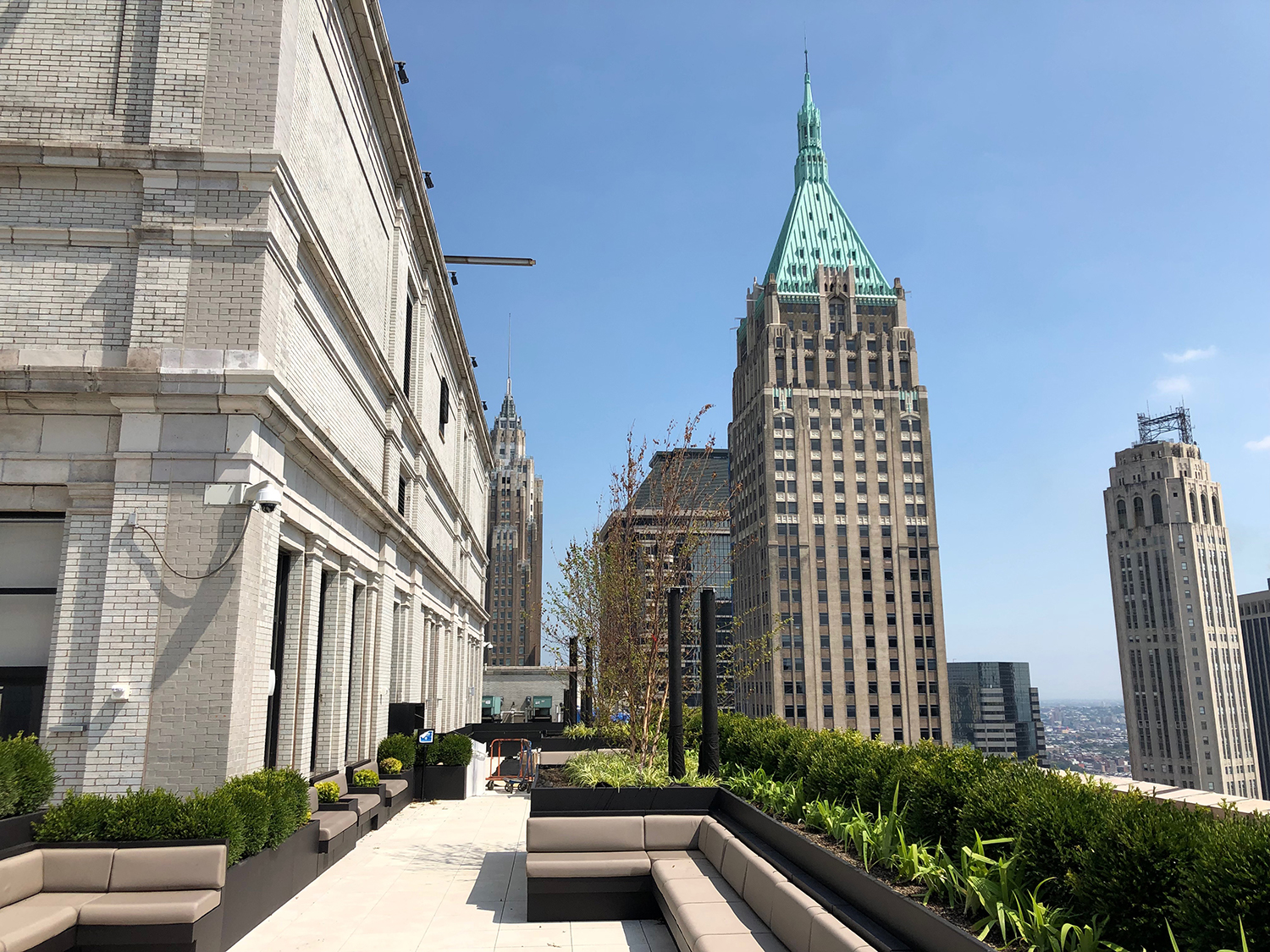
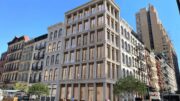
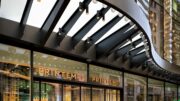
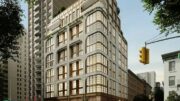

From Wikepedia: Upon its completion, the Equitable Building was controversial because of its lack of setbacks, which in turn does not allow sunlight to reach the surrounding ground. This contributed to the adoption of the first modern building and zoning restrictions on vertical structures in Manhattan, the 1916 Zoning Resolution.
Located in lower Manhattan there is a somewhat attractive Beaux Arts office building on lower Broadway that changed how we look at cities.
The Equitable Building, designed by the firm of E. R. Graham who was the successor to D. H. Burnham & Company of Chicago. The Equitable Building has long been considered to be a key element in the development and passage of New York’s zoning law which would be the first in this country. The
building is considered a key element in the development and passage of New York’s zoning law which was the very first law to be established in this country. Though the building was not the tallest but upon its completion in 1915 the Equitable Building was the largest office building in the world which replaced the original headquarters of the Equitable Life Assurance Company itself a pioneering early skyscraper of 1968-1870 after a fire which destroyed the building.
The H-shaped structure rises above its six-story base approximately 38 stories straight up from the building’s lot line with no setbacks. Architect Peirce Anderson who worked for the Ernest R. Graham firm designed the enormous building that included a Beaux-Arts ornamental treatment that emphasized the Roman classical detail at the base and top. Intended as one of the finest office buildings of its of its era, the Equitable Building was notable for its advanced elevator system and its fireproof construction.
Its bulk and massing became extremely controversial, even before the building’s completion, when neighboring institutions and building owners tried to block its construction. Although not the only building responsible for the establishment of zoning, the Equitable became the prime example cited of the evils of unregulated skyscraper construction, as hearings progressed on what ultimately became the city’s new Zoning Resolution. While the original Equitable Building at 120 Broadway heralded the beginning of America’s development of the skyscraper, its successor heralded the end of most unregulated skyscraper growth yet to be. The new Equitable Building was designed and built after
the completion of the Singer, Metropolitan, and Woolworth buildings. Unlike those, however, it took the form not of a slender, romantic tower but rather of a bulky mass raising straight up from the base of the building that followed the equation, “base-shaft-capital” in office building design. Rather than being built to serve as a corporate symbol or headquarters to the design of a major architect, 120 Broadway was built as a speculative venture for a newcomer to the New York building scene and designed by an architectural office in flux following the death of its founder. Having no apparent need for or interest in a striking corporate symbol after the fire of 1912 that destroyed the first Equitable building, Du Pont and Graham designed and built the largest building that could be squeezed onto its site. As an advanced and up-to-date office building, it featured many practical innovations: The new Equitable building was not constructed to create and architectural folly or to stand as a monument to perpetuate any one’s name. The building was planned upon the idea of an ocean liner, to carry a maximum cargo with the highest degree of efficiency, comfort, and safety to its resulting, massive 38-story block, above three basements enclosed far more office space than any building in the world. Its 1,200,000 square feet of rent-able office space, serviced by more than 50 elevators, was capable of housing a daytime population of some 16,000 office workers. According to a
study by Engineering News, it was the heaviest structure on earth. As the last of a series of increasingly mammoth skyscrapers to be erected in lower Manhattan just before the outbreak of
World War I, the Equitable immediately attracted attention, generally negative. Shortly after the announcement of the construction of the building, the owners of adjoining properties began to fear for the sunlight in their offices. Opponents of the project initially proposed that a park be constructed instead on the site.
New York City had a variety of building codes prior to 1916, initially aimed at preventing fires, later extended to insuring the general safety of buildings. Various initiatives to reform
tenement construction resulted in laws governing residential buildings. Until 1916, however, no municipal code regulated the height or shape of office buildings, in buildings, in part because until the late 1800’s there had no compelling reason to do so. But as the new technology of steel-cage construction and elevators combined with rising prices to push office buildings ever higher, demands grew for laws regulating their height and bulk the new technology of steel-cage construction
and elevators combined with rising prices to push office buildings ever higher as demands grew for laws regulating their height and bulk.
Discussions and proposals of skyscraper regulations predated the Equitable Building. One such proposal was by D. Knickerbacker Boyd, the president of the Philadelphia Chapter of the American Institute of Architects focusing on formulas that would mandate a series of set-backs the higher
a building went, producing a “stepped facade.” As finally adopted in 1916, the Building Zone Resolution encourage the construction of “stepped facade” or “wedding cake” towers. Under the new 1916 rules, no building on the model of the Equitable could be built again. The Zoning Resolution
confirmed the set-back tower type as the model for future skyscrapers-and so it remained until the zoning laws changed again, in 1961 to reflect the post-war’s ideal of the tower-in-the-plaza. Ironically the building is more visible today since the creation of several plazas nearby.
A year ago it was announced that the current owner of the Equitable Building Silverstein Properties will undergo a $50 million restoration that will restore many of the design elements of the building to when it first opened in 1915. Among these changes include the restoration of the Broadway entrance; the current green marble that fills the arch above the doorway will be replaced by a bronze grille over glass, which in turn will fill the building’s lobby with more light.
The building’s revolving doors will get a redesign with bronze finishes to carry forward that theme. Other planned additions include a new lighting system with hanging bronze fixtures to enhance the building’s soaring lobby, a new reception desk, and a granite accent wall. The retail spaces in the lobby will be activated and expanded as well.